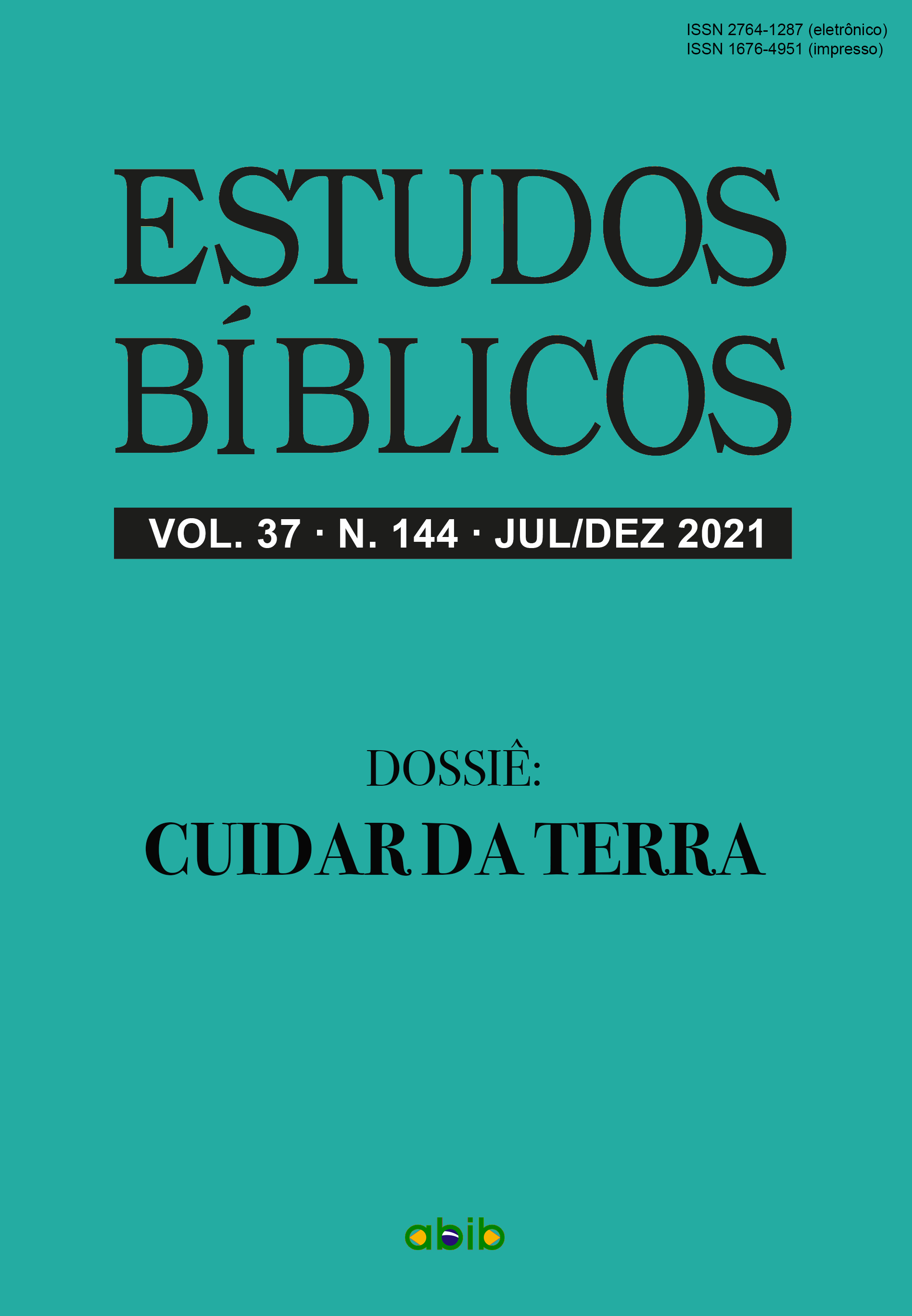Theology of the pure and the impure as a representation of social control
DOI:
https://doi.org/10.54260/eb.v37i144.309Keywords:
pure, impure, social control, post-exile, JudaismAbstract
The post-exile period produced a different understanding of what should be considered pure and impure. Those who returned from the Babylonian exile, aiming to intensify the exercise of political and economic power, reorganized the concepts of pure and impure as a representation of social control. In this sense, the religious discourse becomes a form of power, capable of reorganizing the social space in such a way that the pure can be equated with those in the center and the impure with those on the periphery, terms used to explain the social dynamic that is created around the concepts of holiness and impurity.
References
BÍBLIA Hebraica Stuttgartensia. 5. ed. Stuttgart: Deutsche Bibelgesellschaft; Barueri: Sociedade Bíblica do Brasil, 1990
BORG, Marcus J. Conflict, holiness, and politics in the teachings of Jesus. New York: E. Mellen, 1984. DOI: https://doi.org/10.5040/9781501360008
CARDOSO, Nancy. Nenhuma riqueza é inocente. Exercícios com redes de corrupção שָׁחַת. Revista de Interpretação Bíblica Latino-Americana, São Bernardo do Campo, v. 78, n. 2, p. 5-18, 2018. DOI: https://doi.org/10.15603/1676-3394/ribla.v78n2p5-18
DOUGLAS, Mary. Pureza e Perigo. São Paulo: Editora Perspectiva, 1966.
FOUCALT, Michel. Vigiar e punir: nascimento da prisão. Petrópolis, Vozes, 1987.
GALLAZZI, A. A Teocracia Sadocita: sua história e ideologia. Macapá: Biblioteca de Estudos Bíbli-cos, 2002.
KESSLER, Rainer. História social do antigo Israel. São Paulo: Paulinas, 2009.
KIRK, J. Andrew. O que é missão? Londrina: Descoberta, 2006.
WESTERMANN, Claus. JENNI, Ernst. Theological Lexicon of the Old Testament. North Shore: Hen-drickson Pub, 1997.
LIVERANI, Mario. Más allá de la Biblia. Historia Antigua de Israel. Barcelona: Crítica, 2005.
MARIANNO, Lília Dias. Impureza: Sexualidade e saúde pública no Judaísmo do período persa. Revista Vértices, São Paulo, n. 11, p. 110-130, 2011. DOI: https://doi.org/10.11606/issn.2179-5894.ip110-130
NOVA Bíblia Pastoral. São Paulo: Paulus, 2014.
PAGOLA, José Antonio. Jesus: aproximação histórica. 7. ed. Petrópolis: Vozes, 2014.
PEREIRA, Vinicius Vieira. A produção da relação centro e periferia no pensamento econômico: das teses marxistas do imperialismo capitalista às teorias da dependência. 2015. Tese (Doutorado em Economia) – Universidade Federal de Minas Gerais, Belo Horizonte, 2015.
PIXLEY, Jorge. A história de Israel a partir dos pobres. Petrópolis: Vozes, 1990.
RODRIGUEZ, Octavio. Teoria do subdesenvolvimento da Cepal. Rio de Janeiro: Forense Universitá-ria, 1981.
ROSSI, Luiz Alexandre Solano. Vocação para os pequeninos: do centro para a periferia. Leitura de Isaías 6,1-13. Grande Sinal, Petrópolis, v. 69, n. 4, p. 401-413, 2015.
SCARDELAI, Donizete. O escriba Esdras e o Judaísmo. São Paulo: Paulus Editora 2012. E-book Kindle.
STRONG, James. Dicionário Bíblico Strong. Léxico Hebraico, Aramaico e Grego de Strong. Barueri: Sociedade Bíblica do Brasil, 2002.
TEBES, Juan Manoel. Centro y periferia en el mundo antiguo. El Negev y sus interacciones con Egip-to, Asiria, y el Levante en la Edad del Hierro (1200-586 a.C.). 2. ed. Buenos Aires: Society of Biblical Literature - Centro de Estudios de Historia del Antiguo Oriente, Universidad Católica Argentina, 2008.
WOLFF, Hans Walter. Antropologia do Antigo Testamento. São Paulo: Hagnos, 2007.
ZABATIERO, Júlio Paulo Tavares. Uma história cultural de Israel. São Paulo: Paulus, 2013.
Downloads
Published
How to Cite
Issue
Section
License
Copyright (c) 2021 Mariana Eugenio Schietti, Luiz Alexandre Solano Rossi

This work is licensed under a Creative Commons Attribution 4.0 International License.






































